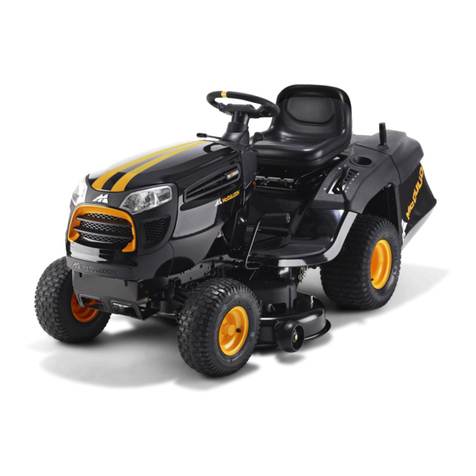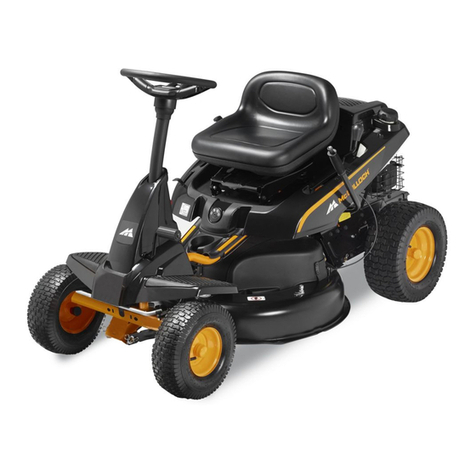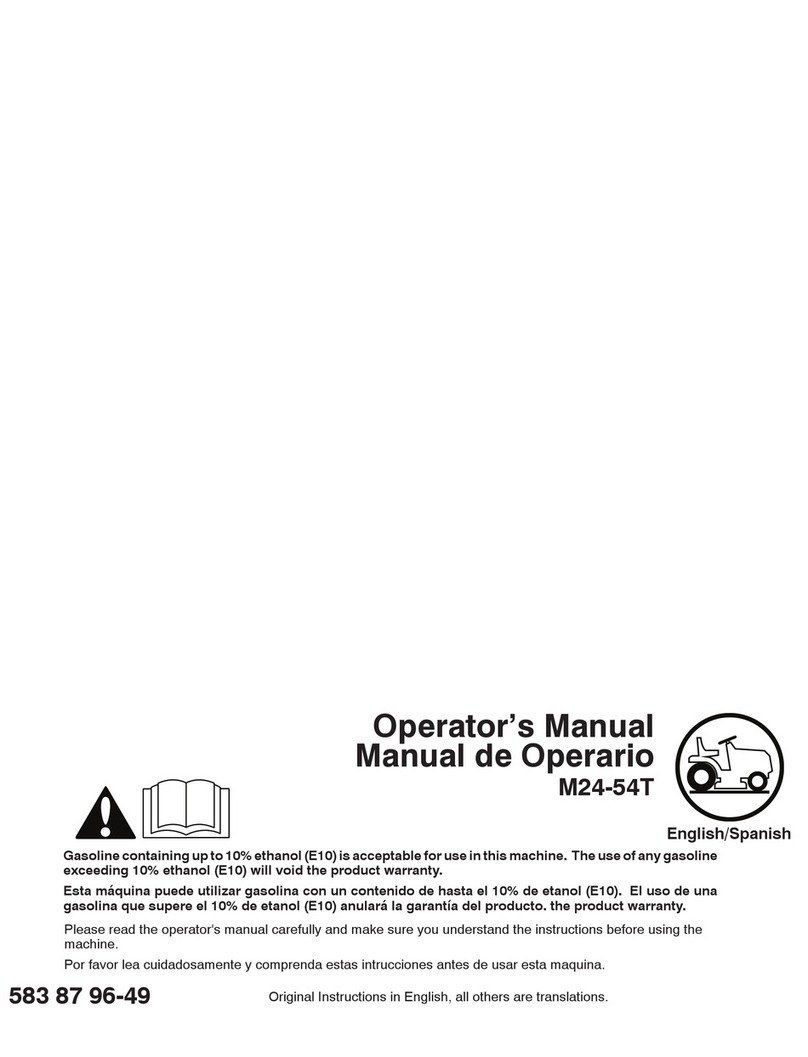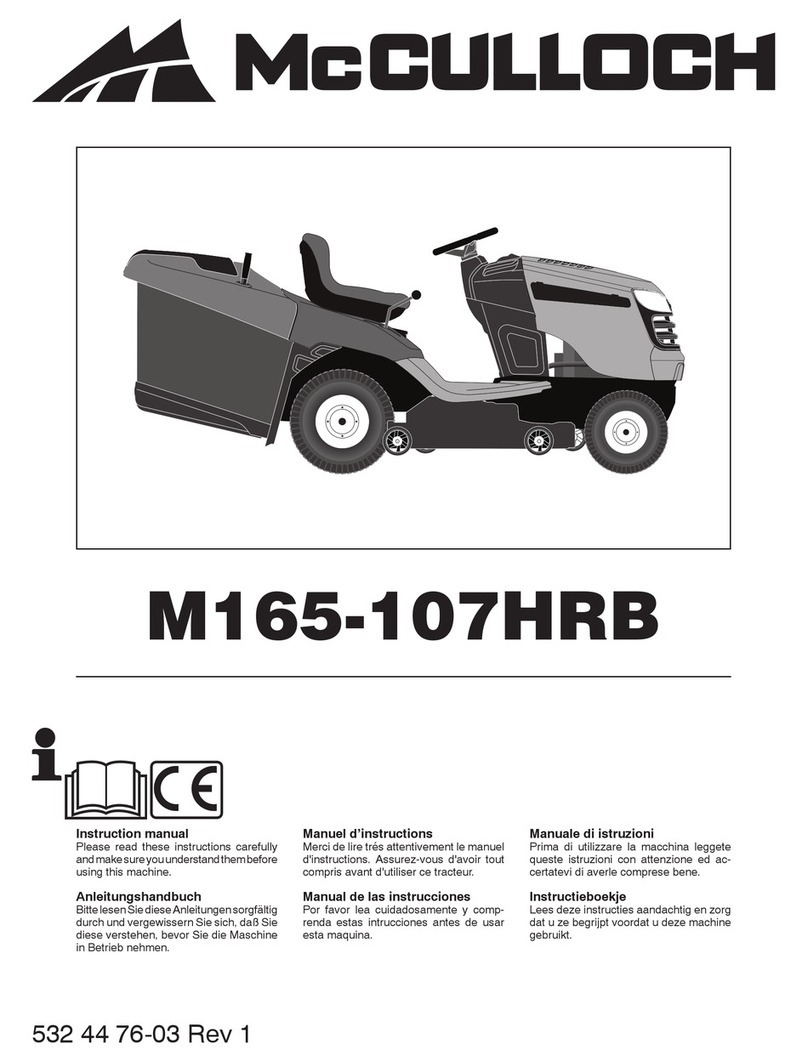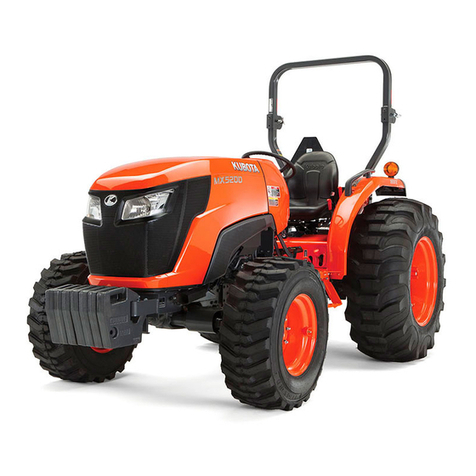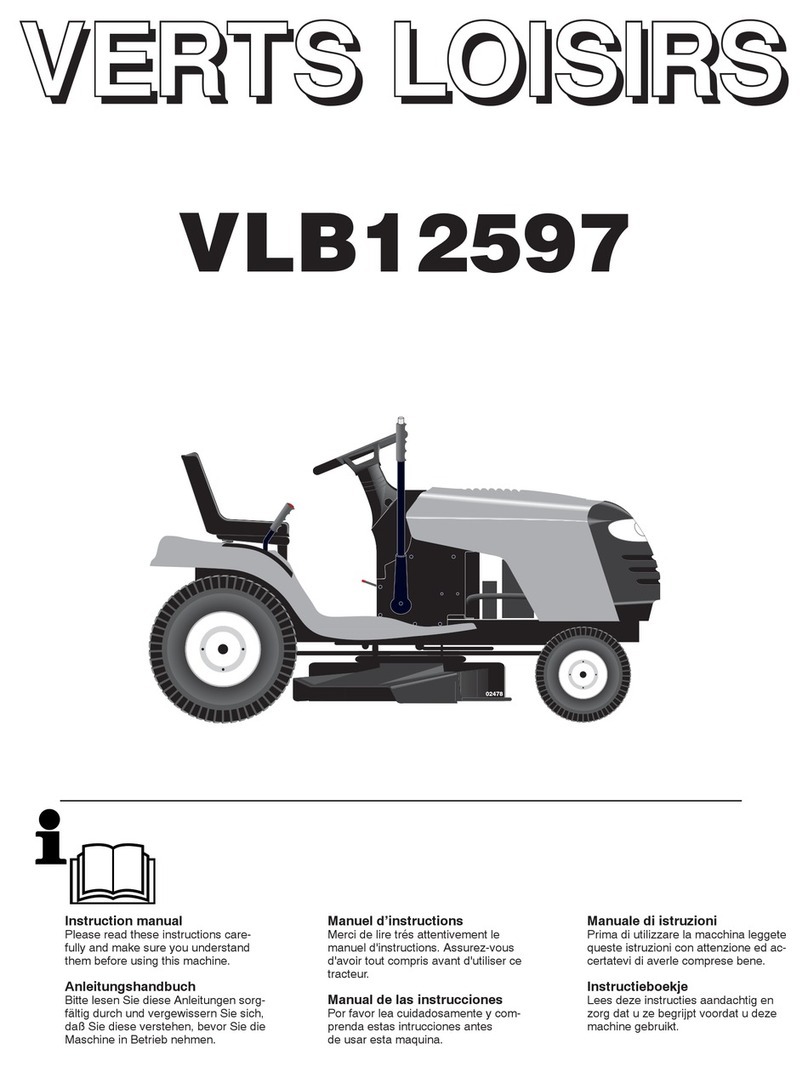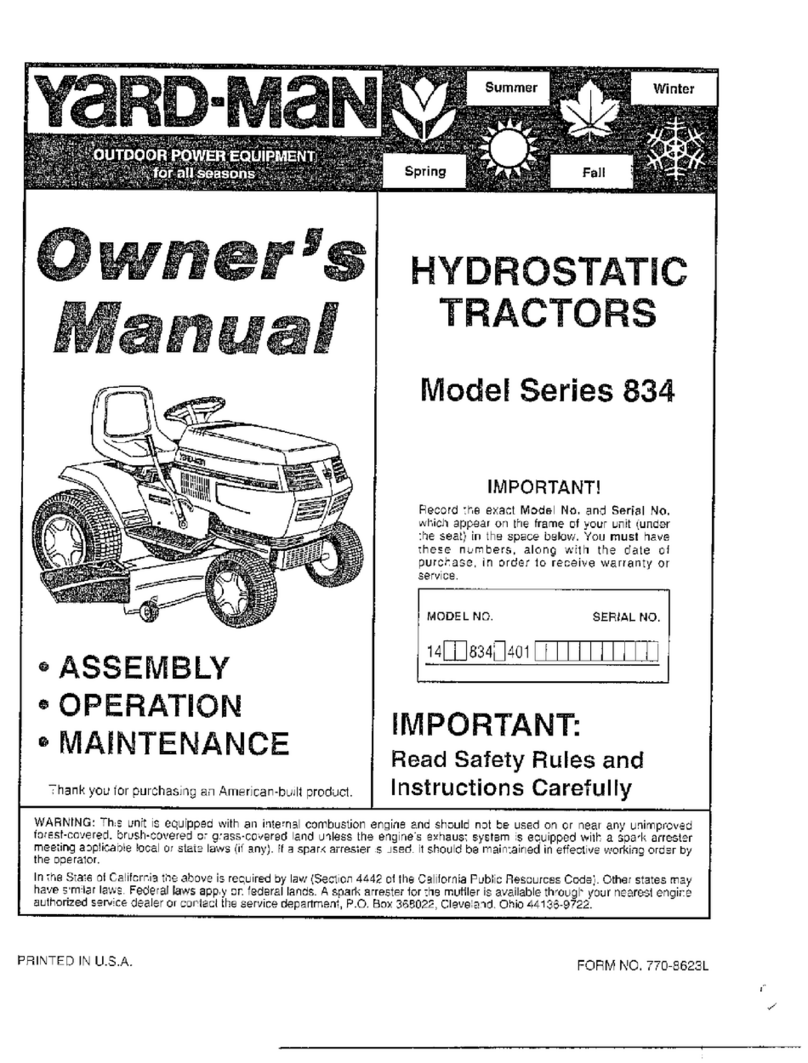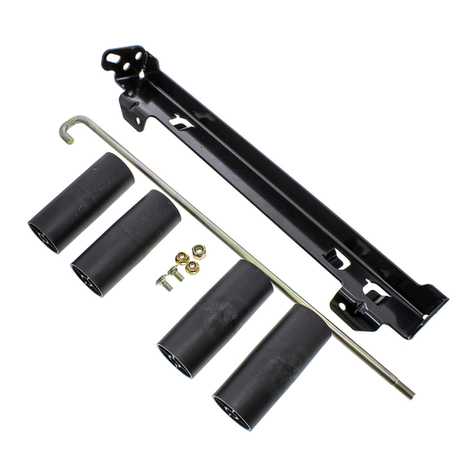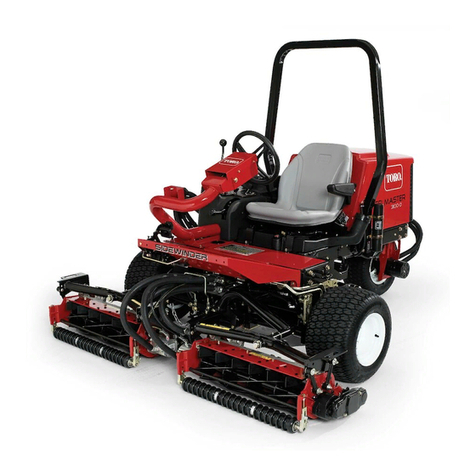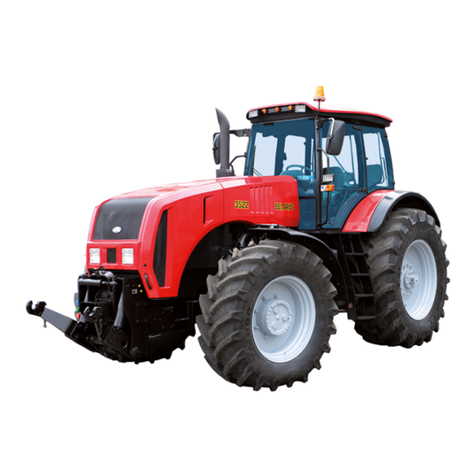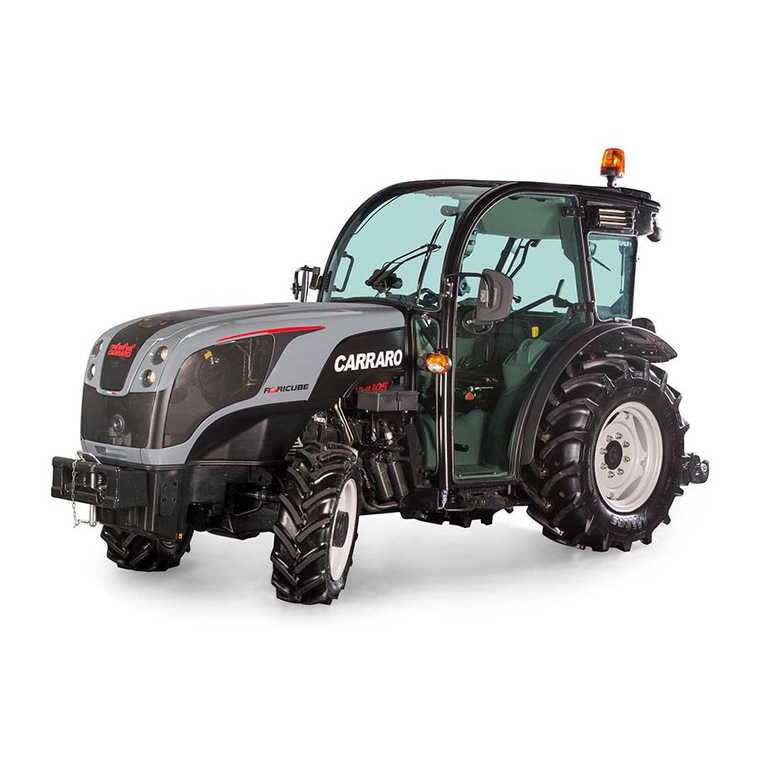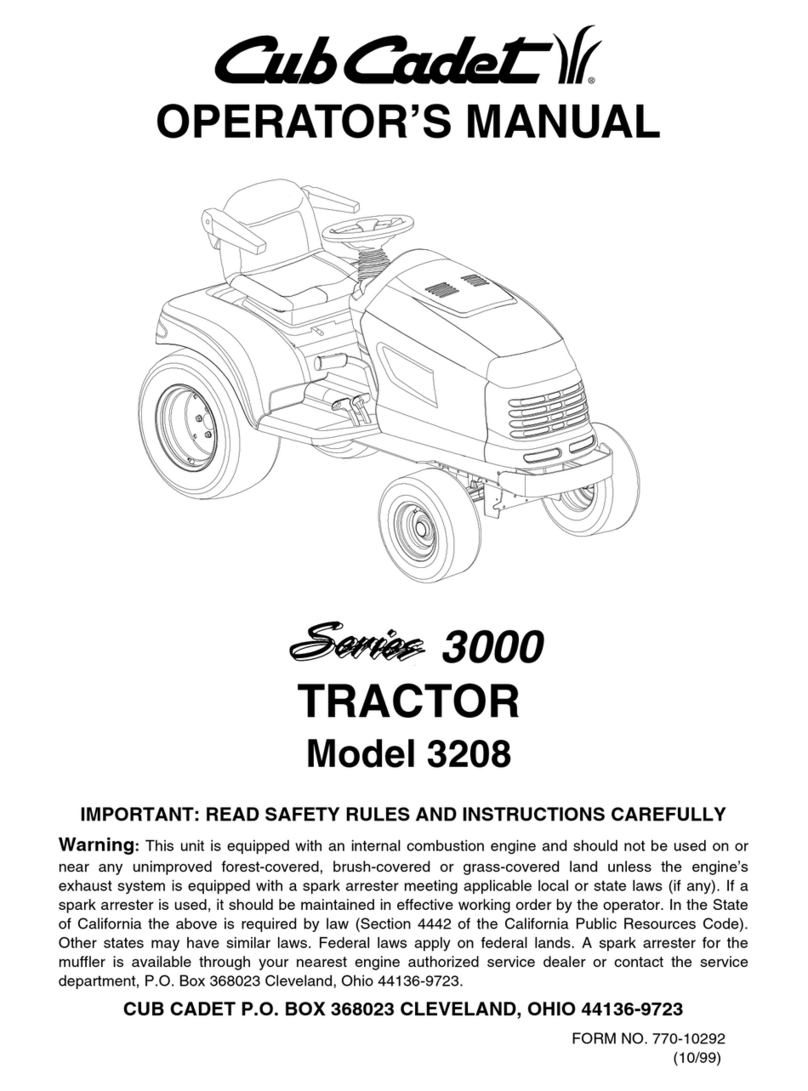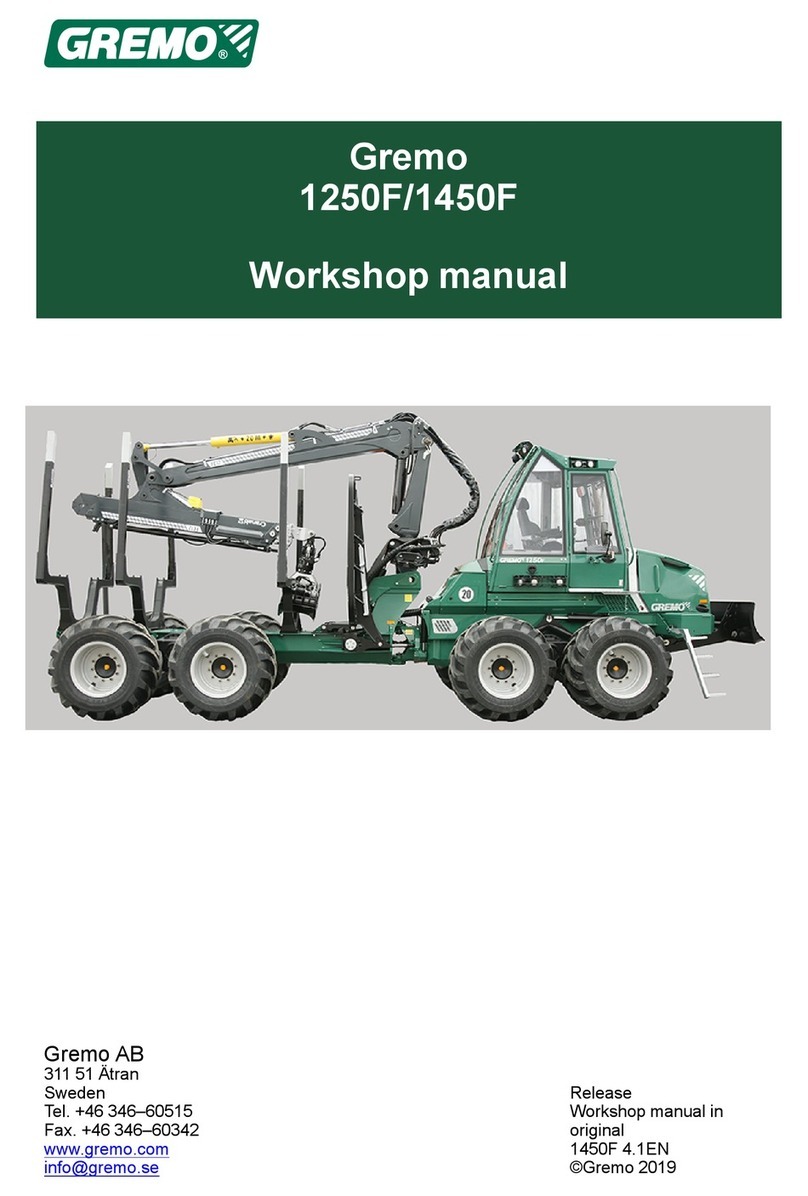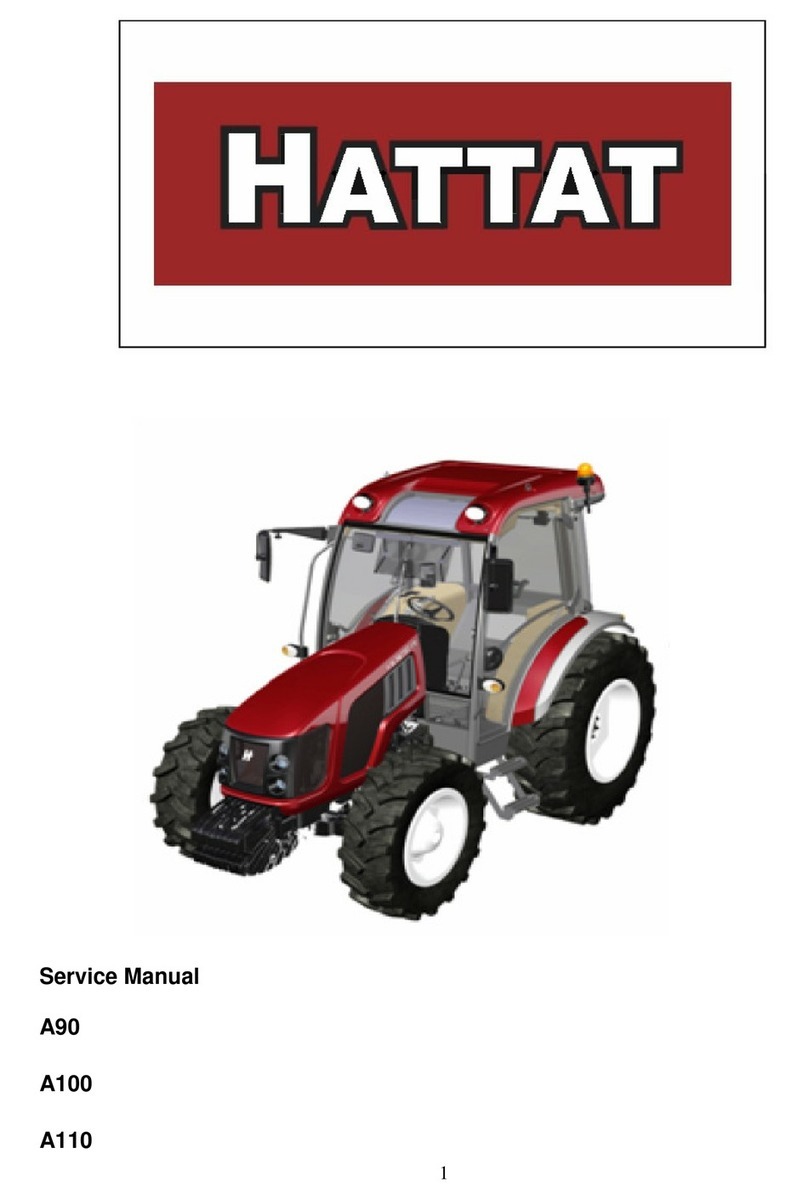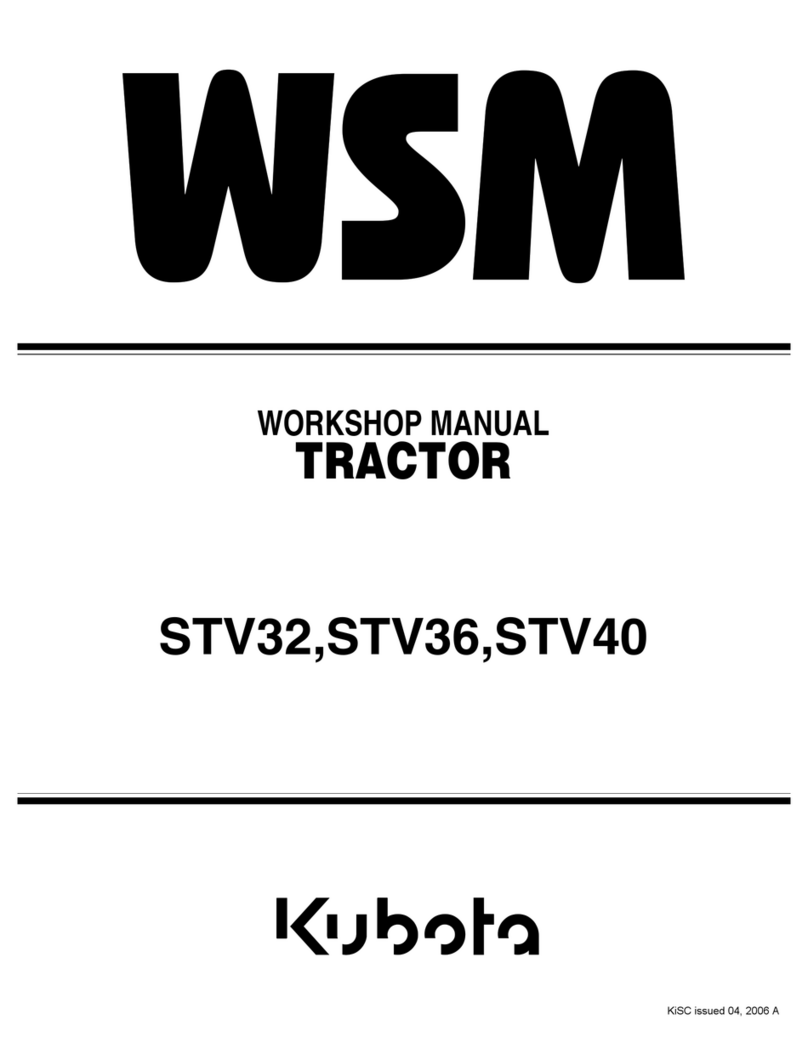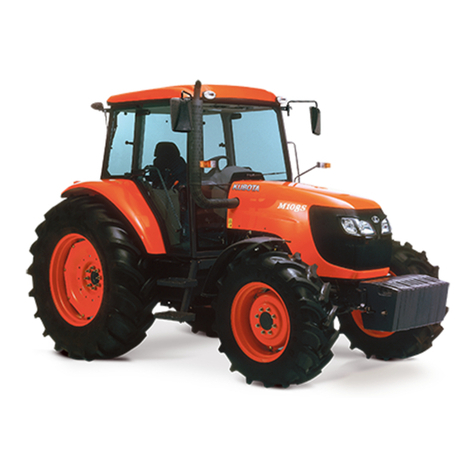
4
I. Schulung
• Die Anleitungen sorgfältig durchlesen. Mit den Bedien-
ungselementen und der vorschriftsmäßigen Bedienung
der Maschine vertraut machen.
• Auf keinen Fall Kindern oder Erwachsenen, die mit der
Bedienungsanleitung des Mähers nicht vertraut sind,
den Betrieb der Maschine gestatten.Das Mindestalter von
Fahrern ist womöglich gesetzlich geregelt.
• Auf keinen Fall mähen, solange sich andere, besonders
Kinder oder Haustiere, im Arbeitsbereich befinden.
• Bitte denken Sie daran, daß der Fahrer oder Benutzer für
jegliche Unfälle oder Gefahren, denen andere oder deren
Eigentum ausgesetzt werden, verantwortlich ist.
II. Vorbereitung
• Während dem Mähen immer festes Schuhwerk und lange
Hosen tragen. Die Maschine nicht barfuß oder mit offenen
Sandalen in Betrieb nehmen.
• Das Arbeitsgelände sorgfältig untersuchen und alle Ge-
genstände, die von der Maschine aufgeschleudert werden
könnten, entfernen.
• WARNUNG - Benzin ist äußerst leicht entzündlich.
- Kraftstoff in speziell dafür ausgelegten Behältern
lagern.
- Nur im Freien tanken und währenddessen nicht
rauchen.
- Kraftstoffnachfüllen,bevorderMotorangelassenwird.
Auf keinen Fall den Tankdeckel entfernen oder Ben-
zin nachfüllen, solange der Motor läuft oder heiß ist.
- Falls Kraftstoff verschüttet wurde, nicht versuchen,
den Motor anzulassen, sondern die Maschine vom
verschütteten Benzin wegschieben und das Verur-
sachen jeglicher Zündquellen vermeiden, bis die
Benzindämpfe sich verflüchtigt haben.
- Alle Deckel wieder fest auf Kraftstofftanks und
Kraftstoffbehältern anbringen.
• Schadhafte Schalldämpfer ersetzen.
• VordemGebrauch immermiteiner Sichtprüfungsicherstel-
len,daßMähmesser,Messerschraubenund dieMäheinheit
nicht abgenutzt oder beschädigt sind. Abgenutzte oder
beschädigte Messer und Schrauben ersetzen, um Aus-
wuchtung zu gewährleisten.
• Bei Maschinen mit mehreren Mähmessern ist Vorsicht
geboten, da beim Drehen eines Mähmessers die anderen
Mähmesser sich womöglich mit drehen.
III. Betrieb
• Maschinenichtin einemgeschlossenenBereich betreiben,
in dem die gefährlichen Kohlenmoxydgase sich sammeln
können.
• Nur bei Tageslicht oder guter künstlicher Beleuchtung
mähen.
• Vermeiden Sie den Gebrauch des Geräts auf nassem
Gras, soweit möglich.
• AchtenSiebeigeneigtenBöden stetsaufIhr Gleichgewicht.
• Gehen Sie (nicht rennen).
• BewegenSiesich mit fahrbarenMotor-Rasenmähernstets
quer zur Neigung der Fläche, gehen Sie nie auf und ab.
• Gehen Sie beim Richtungswechsel auf geneigten Flächen
besonders vorsichtig vor.
• Mähen Sie nicht auf besonders steilen Abhängen.
• Genen Sie besonders vorsichtig vor, wenn Sie den Mäher
ziehen oder zu sich hin drehen.
• Stoppen Sie die Klinge, wenn der Rasenmäher für den
TransportüberFlächen ohneGrasangekippt werdenmuss,
bzw. auf dem Hin-/Rückweg zur/von der zu mähenden
Fläche.
• BenutzenSieden Rasenmäher niemitdefekten Schutzab-
deckungen, oder nicht in Position befindlichen Schutz-
vorrichtungen, wie beispielsweise Leitblechen und/oder
Grasfänger.
• Die Einstellung des Drehzahlreglers nicht ändern, und die
Drehzahl des Motors nicht über die Werkspezifikationen
heraufsetzen. Der Betrieb des Motors bei zu hohen
Drehzahlen kann die Gefahr von Körperverletzungen
vergrößern.
• Vor dem Starten der Maschine alle Blockierungen der
Klingen und des Antriebs lösen.
• Beim Starten der Maschine und Einschalten des Motors
vorsichtig vorgehen. Halten Sie sich an die Gebrauchsan-
leitung und achten Sie darauf, dass Ihre Füße weit genug
von der Klinge entfernt sind.
• Kippen Sie den Rasenmäher nicht während des Starts
oder Einschalten des Motors, es sei denn, dass dies für
den Start erforderlich ist. Kippen Sie ihn n diesem Fall
nicht mehr als unbedingt nötig und heben Sie nur den vom
Bediener entfernteren Bereich an.
• Starten Sie die Maschine nicht, wenn Sie nahe an der
Entladevorrichtung stehen.
• Bringen Sie Ihre Hände und Füße nicht in die Nähe der
rotierenden Organe. Halten Sie die Entladeöffnung stets
sauber.
• Den Rasenmäher bei laufendem Motor nie anheben oder
tragen.
• Den Motor stoppen und das Kabel der Zündkerze trennen:
- vor dem Entfernen von Verstopfungen aus dem
Mähwerk oder dem Auswurf;
- vor dem Prüfen, Reinigen oder Reparieren des
Rasenmähers;
- nachdem auf ein Fremdkörper gestoßen wurde.
Den Rasenmäher auf Schäden untersuchen und
die Reparaturen durchführen, bevor die Maschine
wieder angelassen und in Betrieb genommen wird;
- falls die Maschine anfangen sollte, ungewöhnlich
zu vibrieren (sofort prüfen).
• Den Motor stoppen:
- immer wenn Sie den Mäher zurücklassen;
- vor dem Auftanken.
• Die Drosselklappe während des Auslaufens des Motors
schließen und, falls der Motor mit einem Absperrventil
ausgestattet ist, dieses bei Beendigung der Mäharbeiten
schließen.
• Fahren Sie langsam, wenn Sie einen Sitz benutzen.
• WARNUNG:ESBESTEHTVERLETZUNGSGEFAHR
FÜR KINDER DURCH DIESE MASCHINE. Die US-
amerikanische Akademie für Kinderärzte (American
Academy of Pediatrics) empfiehlt für Kinder ein Mind-
estalter von 12 Jahren für den Betrieb eines normalen
Rasenmähers, und ein Mindestalter von 16 Jahren für
den Betrieb eines Aufsitz-Mähers.
• Beim Be- und Entladen dieser Maschine darf der
empfohlenemaximaleNeigungswinkelfürdenBetrieb
von 15° nicht überschritten werden.
• Für den Betrieb dieser Maschine ist die geeignete
persönliche Schutzkleidung einschließlich (Mindes-
tanforderung) festes Schuhwerk, Schutzbrille und
Gehörschutzzutragen. BetriebenSiedenRasenmäher
niemals mit offenem Schuhwerk wie Sandalen usw.
• Bitte informieren Sie stets eine andere Person, dass
Sie im Freien mähen werden.
IV. Wartung und Lagerung
• Daraufachten,daßalleMuttern, BolzenundSchraubenfest
angezogen sind, um zu gewährleisten, daß die Maschine
für den Betrieb sicher ist.
• Die Maschine auf keinen Fall mit Benzin im Tank in einem
Gebäude lagern, in dem die Benzindämpfe ein offenes
Feuer oder einen Funken erreichen könnten.
• Den Motor abkühlen lassen, bevor er in einem geschlos-
senen Raum gelagert wird.
• Um die Feuergefahr herabzusetzen, den Motor, den
Schalldämpfer, den Batteriekasten und das Kraftstofflager
von Gras, Laub und übermäßigem Schmierfett freihalten.
• Den Grasfänger häufig auf Abnutzung oder Verschleiß
prüfen.
• Abgenutzte oder beschädigte Teile zur Sicherheit immer
sofort ersetzen.
• Falls der Kraftstofftank entleert werden muß, sollte dies
im Freien getan werden.
Sicherheitsvorkehrungen für Handgeführte Rasenmäher mit Rotationsklinge
WICHTIG: Diese mähmaschine kann hände und füsse abtrennen und gegenstände mit hoher geschwin-
digkeit schleudern. Nichtbeachtung der folgenden sicherheitsvorschriften könnte schwere oder tödliche
verletzungen zur folge haben.
